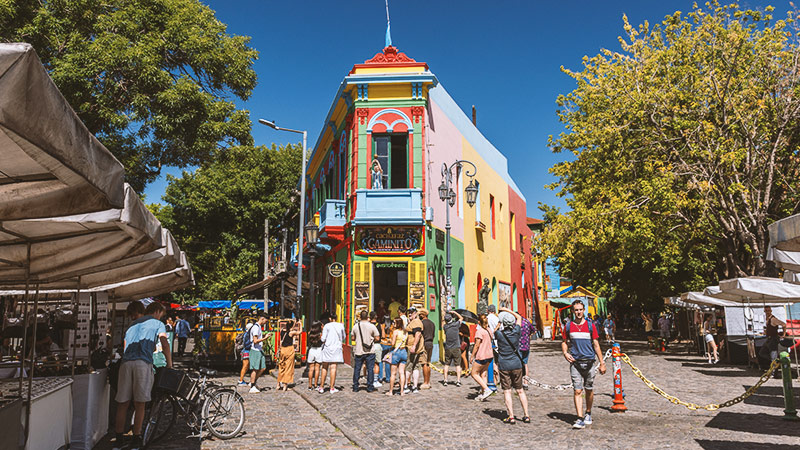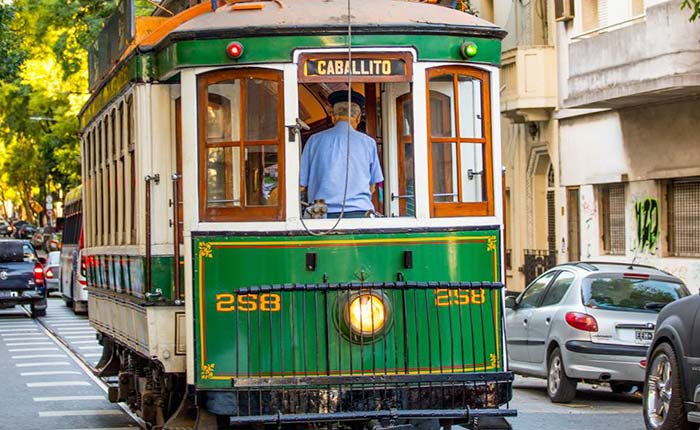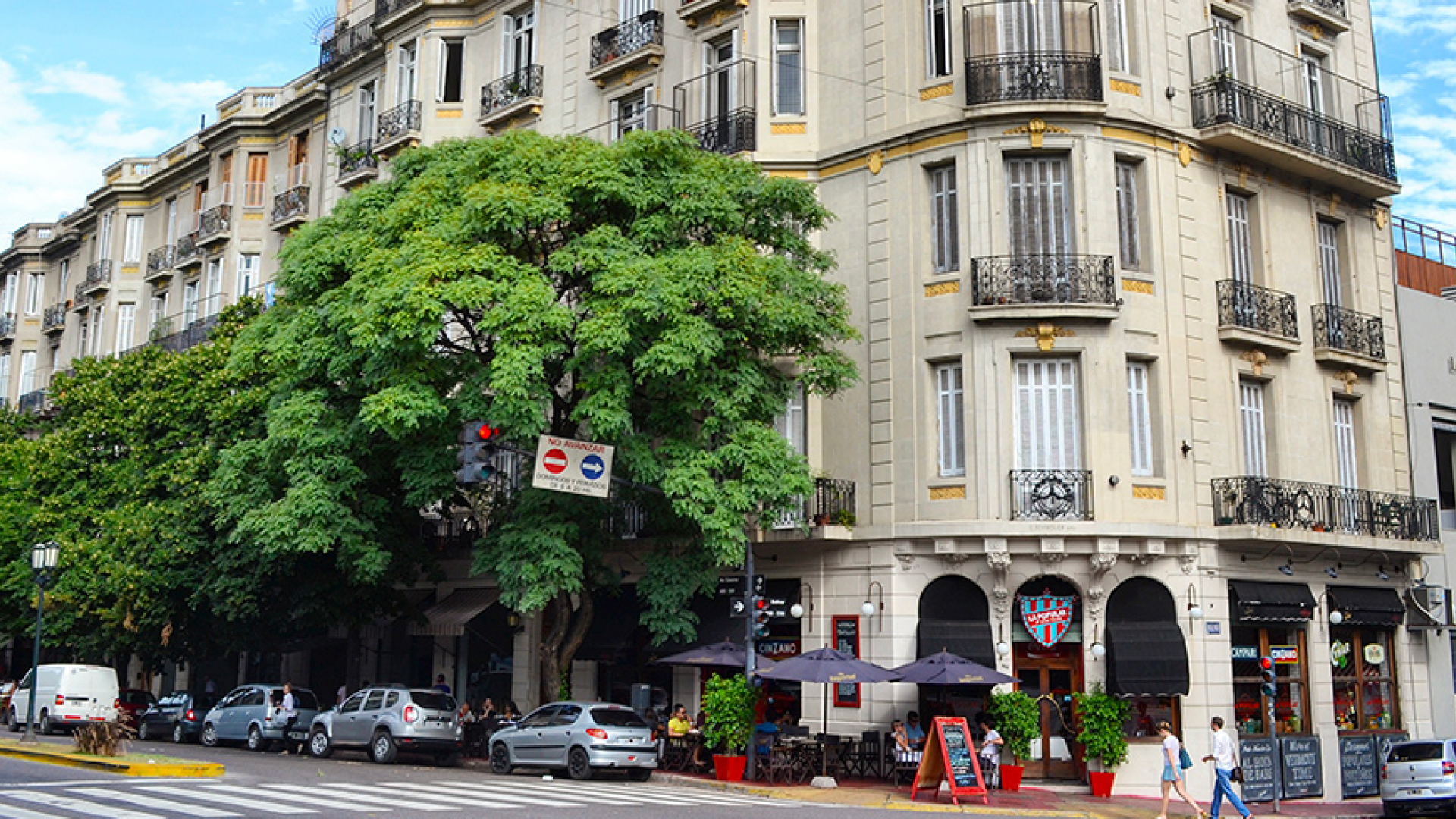In fact, its winding layout is due to the fact that, until the early 20th century, a stream ran through there. This area was popularly known as "Puntin," the diminutive of "bridge" in the Genoese dialect. Let's clarify that it was this Italian community, which settled in the La Boca neighborhood, that gave the area its character.
For a long time, this stretch was part of the railway route to Ensenada (an hour from Buenos Aires). Until, in 1928, the branch was closed, and the track became an abandoned alley.
The stream dried up. The rails fell into disuse. However, against all odds, this corner of Buenos Aires was destined to become one of the city's most iconic sites.

When It All Began
It was only in 1959 that, thanks to the initiative of several neighbors and the donation of many artists, the land was recovered to turn it into a pedestrian walk recognized as an "open-air museum." One of the great promoters of the area's enhancement was the painter Benito Quinquela Martín, who grew up in La Boca and was a great benefactor of this neighborhood.
It was Quinquela Martín himself who, in 1959, pushed for this street to be named after the famous tango "Caminito," composed by Juan de Dios Filiberto and Gabino Coria Peñaloza.
Finally, on September 10, 1959, the Buenos Aires City Council unanimously passed an ordinance that incorporated the Vuelta de Rocha into the Building Code. One of its clauses established that the surface finish of the main facades of buildings constructed, painted, or refurbished in the Vuelta de Rocha and several adjacent blocks should be painted in the colors and tones determined by a commission composed of "a representative of the Honorable City Council, an architect appointed by the executive department from the municipal staff, and the painter Benito Quinquela Martín."
The Great Benefactor
Quinquela Martín did not leave his mark only on the Vuelta de Rocha but also donated five plots of land to the City, which became institutions with different purposes. Two of them are the Pedro de Mendoza School-Museum and the Benito Quinquela Martín Museum, where you can enjoy his work.
"Everything I did and achieved, I owe to my neighborhood. Hence the irresistible impulse that inspired my foundations, all of them based in La Boca. That's why I don't consider my donations as such, but as repayments. I gave back to my neighborhood a good part of what it made me earn with my art. I feel both of them as fused inside and outside of myself," said the painter, who passed away in January 1977.
Art, Art, Art
In December 2023, sculptures were added to the walk. Among them, one in homage to Quinquela Martín. On your tour, you will find a replica of his portrait, made in 1929 by his friend, the sculptor Luis Perlotti.
The work Estibador, by Pascual Guisasola Contell, which was in Caminito until it was vandalized in 1989, was also restored. Twenty-four years later, a new cast was made from the original sculpture.
Curiosities
Did you know that, in reality, the lyrics of the tango "Caminito" have nothing to do with this stretch of the La Boca neighborhood but were born as a poem written by Gabino Coria Peñaloza in 1903, in homage to a path in the province of La Rioja, specifically in the town of Olta?



